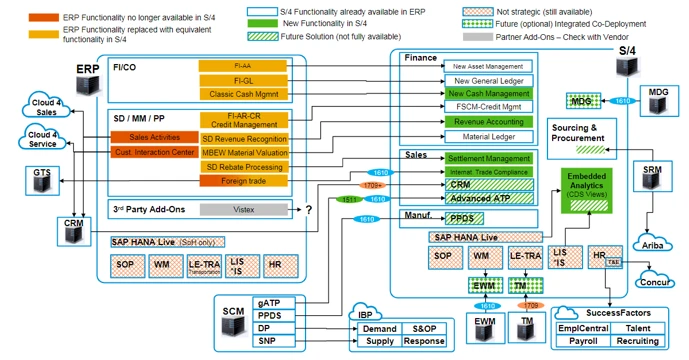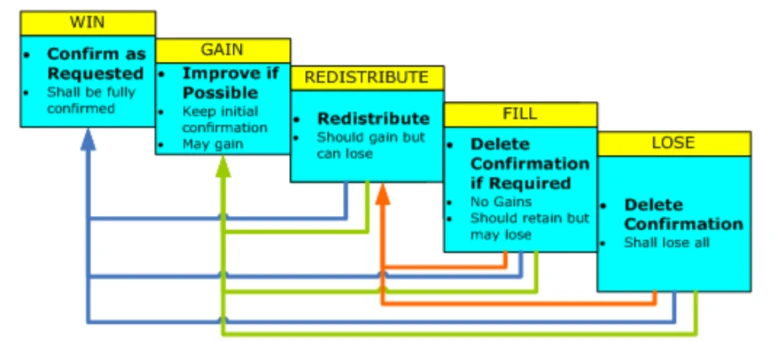Making Sense of SAP Order to Cash in the Complexity of the S/4HANA World
Making Sense of SAP Order to Cash in the Complexity of the S/4HANA World.
The complexity of SAP needs no introduction. However, S/4HANA has added several new layers of complexity and if you are not immersed in it, it may seem impossible that you will ever get to grips with it. Never fear! If this is you, then read on…
I once heard an SAP professional describing SAP as “nothing more than a concoction of inter-related apps”. In some ways, he had a point. SAP has, in recent years, undergone a very aggressive policy of swallowing up competitors in the market place, or expanding their footprint into new markets via acquisitions of other organizations. Since 1991, SAP have acquired 67 other companies. Some of those have been embedded nicely into the SAP ecosystem, such as Success Factors (acquired by SAP in 2011 at a cost of $3.4 billion). However, others are not yet so deeply embedded and can lead to some sympathy with our SAP professional who bemoaned the overall SAP landscape.
The year 2018 marked the peak of SAP acquisition activity with five major acquisitions including experience data platform Qualtrics for $8 billion and the cloud based quote to cash solution Callidus Cloud for $2.4 billion.
Since then, SAP have pegged back their acquisitions in favour of bedding down their existing solutions. This has come as a relief to many SAP architects who have spent recent years scrambling to keep abreast of all the new acquisitions and developments.
However, the SAP landscape of ECC6.0 still looks pretty straightforward when you compare it to the deployment options of S/4HANA, as shown in this diagram (provided by SAP SE). Lots of applications all connected with each other, some of which are now embedded into S/4HANA and some are not.

So how do you make sense of it all? If you are an SAP Order to Cash consultant, whose career has been nurtured in the loving and largely predictable world of ECC6.0 and R/3, then how do you learn those new skills you now need to apply yourself to an SAP world increasingly dominated by the looming shadow of S/4HANA?
It’s not possible in one blog to give you all this information, so if you need more than a high level overview, please look at the Further Reading section at the end to see where to get full information on these changes.
Firstly, you must familiarise yourself with the S/4HANA terminology. This terminology is not going away and more and more it is becoming an integral part of any SAP S/4HANA implementation, so ignore it at your peril.
Let’s start with some basics.
HANA. What is HANA? At its most basic definition, HANA is a database. You might be used to Oracle or Linux providing your underlying database where all your master data and transactional data sits, but SAP are firmly in the game now, with HANA (acronym is short for High Performance Analytical Appliance).
S/4. This is short for “Suite For”, therefore S/4HANA is “Suite For HANA” – very different from “Suite On HANA”, which usually refers to an ECC6.0 system which runs on a HANA database. The difference is important – ECC6.0 can run on any database, whereas S/4 can only run on HANA.
And what is Fiori?
This is the latest and greatest user experience in the new S/4HANA world, through which your users on S/4HANA will interact with SAP. It is a web-based portal with analytical, factsheet and transactional apps, all laid out in an easy to use and customisable manner. For Order to Cash users, Fiori is pretty much essential (yes, I know, there will be plenty of S/4HANA customers out there who still use the SAP GUI, but believe me, you are missing out!).
So now on to the Order to Cash innovations, which you will need to explore and become conversant with in order to be able to brand yourself an S/4HANA OTC Consultant. I’ll lay these out in a list with a very brief introduction for each. More on how to get greater detailed information on these can be found in the Further Reading section at the bottom of the blog.
Fiori apps
The Fiori UX is vital for Order to Cash and can be a real game changer for sales and distribution users. Key apps such as “My Sales Overview”, “Sales Management Overview” and “Sales Order Fulfilment” offer never before seen out-of-the-box insights into issues in the supply chain, with full drill down capabilities.

Business partner
The concepts of business partner is not new to S/4HANA, but now it is mandated. No more customer, vendors and contacts – all are now unified in the one data object: Business Partner. This allows elimination of redundant data and smoother interfaces with connected systems such as CRM.
Settlement Management
Rebates are a pain aren’t they? And there are SD rebates with customers and MM rebates with suppliers. These are now redundant completely and have been replaced by the much more flexible approach around Settlement Management, where you can handle all your customer and supplier rebates in one unified tool.
Pricing tables
Pricing tables in S/4HANA have been simplified. Table PRCD_ELEMENTS has been introduced to replace table KONV – this is essentially a tidy up by SAP with an associated improvement in system performance.
BRF+ for outputs
Again, this has been around before S/4HANA, but the default output management is now through BRF+ in S/4HANA. The approach is very different from the NAST approach to outputs, and provides a web based portal to manage outputs. This is in response to complaints of inflexibility in the NAST approach. BRF+ is an all-encompassing tool where business rules can be defined to drive specific outcomes, like outputs. Very powerful, but complex.

Credit Management
This is a significant change in S/4HANA. Previously in ECC6.0, this was housed under the SD configuration, but in S/4HANA, this has moved to the Financial Supply Chain Management section. As a result, this would be a collaboration with your FICO colleagues to get this set up. This change is not optional – you need to become familiar with the new credit management functionality in S/4HANA as a prerequisite to running credit management in SAP. The reason why it has changed is pretty much the same as the other “simplifications” around S/4HANA – greater flexibility, automation of processes and elimination of redundant data.
Revenue Accounting and Reporting
Revenue recognition was very simple in ECC6.0 SD: you just amended a setting against the item category to trigger milestone or periodic revenue recognition and then posted the rev rec by using VF44. Then everything changed in 2014 when the IFRS (International Financial Reporting Standards) introduced IFRS 15 in association with US GAAP (Generally Accepted Accounting Principles). These principles became mandatory in the US and much of Europe in 2018 and SAP overhauled its revenue recognition offering as a result. What this means for S/4HANA is that it is not possible to use the old rev rec settings any more – for revenue recognition, the new Revenue Accounting and Reporting must be followed; RAR can also be downloaded for ECC6.0 if above enhancement pack 5. This is a big change for SAP and the approach follows five steps as laid out in the diagram below. You would need to discuss RAR with your FICO colleagues to get it set up in configuration. A word of warning – do not underestimate the time needed to get this done!

Advanced Available to Promise
ATP has been around since the dawn of SAP, but with S/4HANA comes the optional extension aATP – this does require an additional license cost.
The settings are split into five potential buckets, as displayed in the diagram below. You can slot different customers according to freely defined attributes into each of the five buckets. This gives you a far more flexible approach to ATP than was previously possible.

Foreign Trade
Foreign trade settings in SD are no longer required in S/4HANA. SAP has moved all of these settings into its additional application “Global Trade Services” (GTS). However, many of the functions are still available in core S/4HANA but in a completely different solution. The settings around International Trade (legal control, embargos, intrastat and integration with SAP Watch List screening) can be found under the customising menu for Governance, Risk and Compliance. Please note however, that once you have set these customising settings up, the maintenance of the international trade settings is carried out exclusively in Fiori apps, not in the SAP GUI.
Table changes and deprecated transactions
Many database tables have been simplified or eliminated in S/4HANA. The most important change here is the elimination of the need for the VBUK and VBUP tables, the fields of which have been moved to VBAK and VBAP. There are many deprecated transactions in S/4HANA too. The most obvious are the old customer and vendor transactions such as XD01 and XK01. A full list is available by using table PRGN_CORR2 in SE16N.
Author: Jon Simmonds, Senior ERP Architect